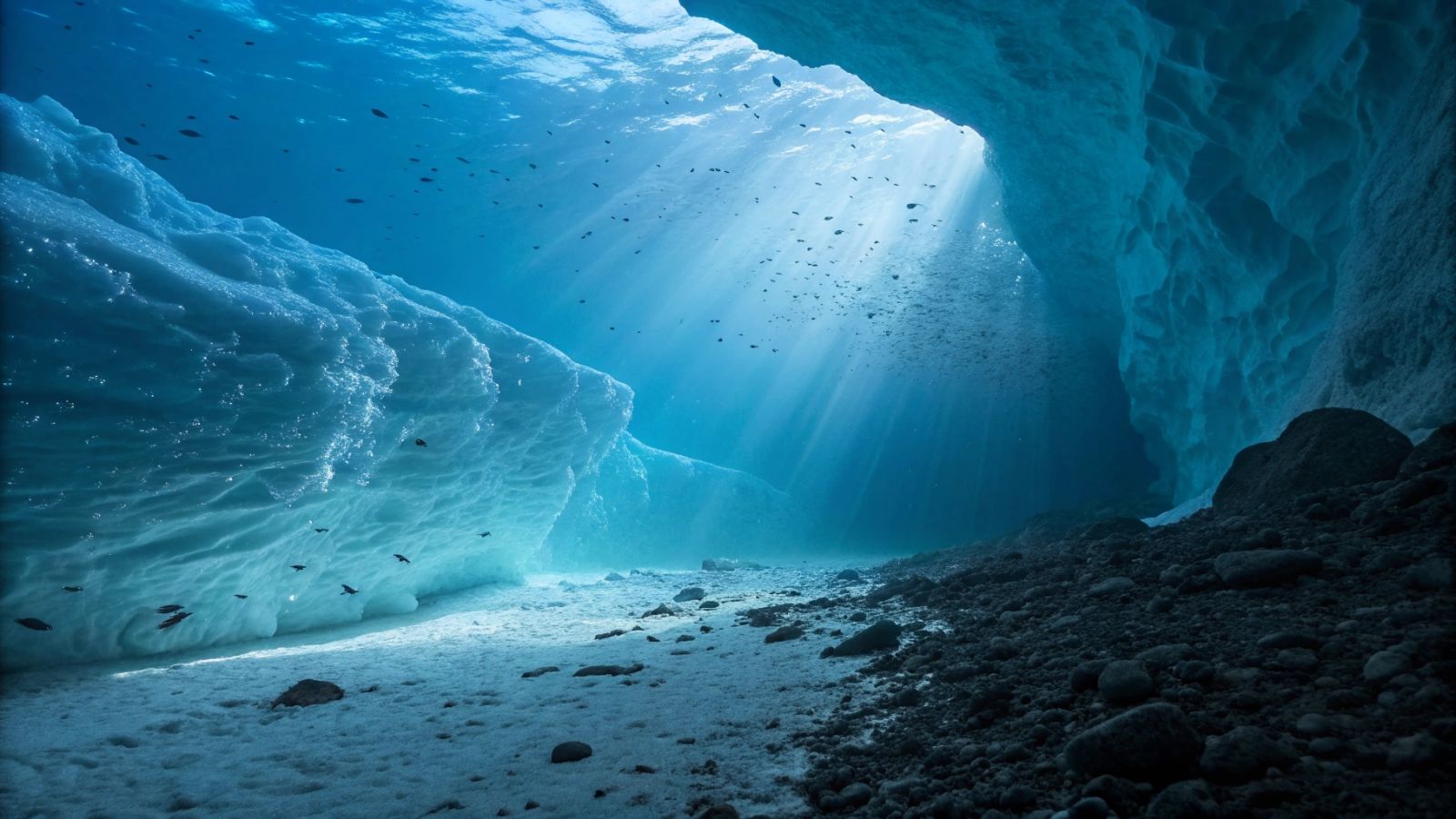The impact of melting ice on underwater light: an invisible threat 🌊
Published by Cédric,
Article author: Cédric DEPOND
Source: Nature Communications
Other Languages: FR, DE, ES, PT
Article author: Cédric DEPOND
Source: Nature Communications
Other Languages: FR, DE, ES, PT
Follow us on Google News (click on ☆)
Researchers reveal that ice acts as a unique optical filter, preserving a broad light spectrum. Its melting leaves behind dominant blue light, unsuitable for many photosynthetic organisms. This change could reshape the foundation of polar food webs.

A physical phenomenon with biological repercussions
Ice and liquid water don't interact with light in the same way. The crystalline structure of ice limits molecular vibrations, allowing all wavelengths to penetrate the ocean. In contrast, liquid water preferentially absorbs reds and greens while letting blue light pass through (which is why the ocean appears blue to us).
Glacial algae have adapted to this full spectrum. Their pigments exploit varied spectral niches, a strategy made ineffective in a bluish environment. Optical models confirm this transition disadvantages specialized species.
The international team, led by the University of Amsterdam, highlights that this unprecedented competition could favor oceanic phytoplankton. However, these are often less nutritious for zooplankton, a key link in polar ecosystems.
Cascading consequences
Algae growing under ice produce early blooms, essential for the reproduction of certain crustaceans. Their decline would disrupt this synchronization, affecting fish, seabirds, and mammals. Researchers warn of risks for penguin colonies dependent on these resources.
Marine photosynthesis also helps capture atmospheric CO₂. Any reduction in its efficiency would impact the carbon cycle. The authors advocate integrating these mechanisms into climate models.
In Antarctica, observations already confirm a decline in diatoms, replaced by smaller species. If this trend intensifies, it could threaten the resilience of polar ecosystems in the face of global warming.